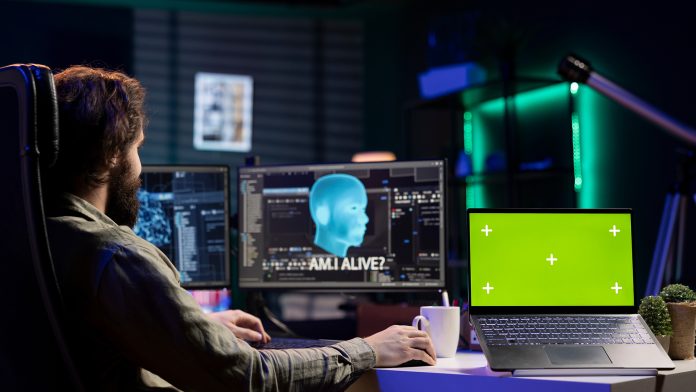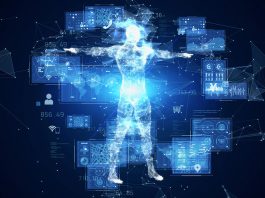Following Alan Turing’s 70th anniversary, former Cambridge University computer science lecturer and software CEO Dr John Bates has some thoughts on the need to rethink a key part of his legacy.
On the 70th anniversary of his untimely passing this June, many of us quietly raised a glass to honour the Father of Computer Science, Alan Turing—a figure whose contributions have profoundly shaped the field of information technology.
However, one aspect of his legacy that warrants a reassessment is the famous Turing Test—the benchmark for when a machine intelligence could be said to be ‘thinking’.
Ever since Turing first published his reflections on artificial intelligence in a journal called Mind in 1950, his idea centred on a machine imitating responses well enough to deceive an interlocutor into presuming they must be speaking with another person rather than a set of programming instructions. This construct was devised to answer his initial question: ‘Can machines think?’
As the foundation for his conviction that machines would soon think, Turing offered this prediction: “I believe that within approximately fifty years’ time, it will be feasible to program computers possessing a storage capacity of around 10 raised to the 9th power, enabling them to engage in the imitation game with such prowess that an average interrogator would have no greater than a 70% probability of correctly discerning the true nature of the respondent after five minutes of questioning.”
AI systems of the 1970s and 1980s were notoriously brittle
10 to the power of 9, or a billion (1 followed by 9 zeroes), was Turing’s conservative estimate for the storage capacity required, anticipating it would take half a century to achieve what we now know as a gigabyte of memory. But Turing’s paper isn’t an engineering paper, it’s a philosophical one, and the question Turing sets deserves a serious answer.
In summarising decades of AI research into one paragraph, it’s notable that it didn’t take 50 years to develop machines capable of mimicking human responses. Within just 14 years, a language programme called Eliza became so good at communicating that interlocutors began confiding all their secrets to her. One could argue that the Turing Test was effectively achieved during that era.
But that perception is misleading. Even the most impressive AI systems of the 1970s and 1980s were notoriously ‘brittle’. They excelled at one specific task but lacked the transferable capability to adapt to different use cases. Only the most ardent AI scientists thought of them as anything more than sophisticated appliances.
However, a significant shift is underway: ChatGPT. This system and its counterparts, known as large language models, have truly remarkable underlying technology. These models possess billions of parameters, enabling them to access a vast corpus of information covering substantial portions of the public internet.
And it will be clear to anyone who spends any time using these systems, that while remarkably proficient, they do not in fact possess true intelligence. They are exceptionally good pattern matchers and autocomplete algorithms. Their ability to generate coherent answers to our questions and prompts creates the illusion of genuine sentience.
Alan Turing predicted limited intelligence
What’s fascinating to me is that Alan Turing anticipated this. Just consider some of the questions he believed an intelligent computer should be able to handle:
- Q: Please write me a sonnet on the subject of the Forth Bridge.
- A: Count me out on this one. I never could write poetry.
- Q: Add 34957 to 70764
- A: (Pause about 30 seconds and then give an answer) 105621.
- Q: Do you play chess?
- A: Yes.
- Q: I have K at my K1, and no other pieces. You have only K at K6 and R at R1. It is your move. What do you play?
- A: (After a pause of 15 seconds) R-R8, mate.
ChatGPT could achieve this today, instantly, with over 1Gb at its disposal. So, it seems we must acknowledge that Turing’s test has finally been met. These computers think, or at least imitate, thinking so convincingly that it’s difficult to explain why they aren’t truly thinking.
But aside from a few fringe AI researchers who believe LLMs are achieving sentience, most people still feel that despite these systems’ ability to converse with and understand us, the interactions remain limited. Think of a chatbot who can’t fully understand you but who also stubbornly refuses to put you through to a person who can.
That would suggest that, while in some ways computers have reached the conversational abilities Turing described as necessary to pass his experiment on machine thinking, we still don’t view these systems as our equals. Therefore, we haven’t truly passed the Turing Test in its full sense, where we wouldn’t be able to distinguish our conversation partner from a human.
Let’s stop worrying if our machine helpers are like us
To be fair, AI researchers have never been entirely satisfied with the test. But the real question is, in a world where encountering rapidly improving AI is ubiquitous, should we seek a better litmus test for machine intelligence?
A few minutes of reflection on this reinforces the idea that we’re a long way off. I love Tesla Autopilot, for example, but what it’s really doing is tuning its neural network based on examples of ‘good’ driving (as selected by humans) —it’s not a driver in the same way I am. I was just sent a file of AI-composed music for our office party. I have to say, some of it could have charted back in the 1970s, but it’s really just a clever imitation of music with no real ‘soul’ or originality. There’s no creative spark.
What we can assert with confidence is that ChatGPT is fundamentally rooted in the information available on the internet. It isn’t capable of generating novel ideas or information autonomously. It relies on the data present in its training dataset.
Now, I’m happy to acknowledge that this represents a distinct form of intelligence. And indeed, maybe this is how humans learn. But I believe humans also go beyond this in being able to truly invent, not just apply knowledge. Overall, I believe we’d all benefit if we ceased worrying or hoping that our machine assistants are as intelligent as us or capable of thinking like us and instead focused on maximising their usefulness and efficiency, regardless of how they achieve it.
Consider Bridget Jones (and it appears we are in for another delightful installment of her life story). Famously and in the most relatable way, Bridget records all her innermost thoughts on dating and her calorie intake on traditional paper. I believe we are very close to having really smart diaries that could function like super-smart friends to Bridget and inform her about how much red wine she’s actually consumed this month.
Would Bridget consider this smart diary as a person? Perhaps she might. But I believe she would view it as we regard all the new AI assistance entering our lives—as the latest convenience and helpful tool.
To this extent, Alan Turing was correct. The interface to these intelligent helper systems will improve to the point where we may forget they are machines, and they can feel almost like people. However, I believe we won’t view them as people, except perhaps in jest. Instead, we will focus on the data, information, and guidance they provide for us.









